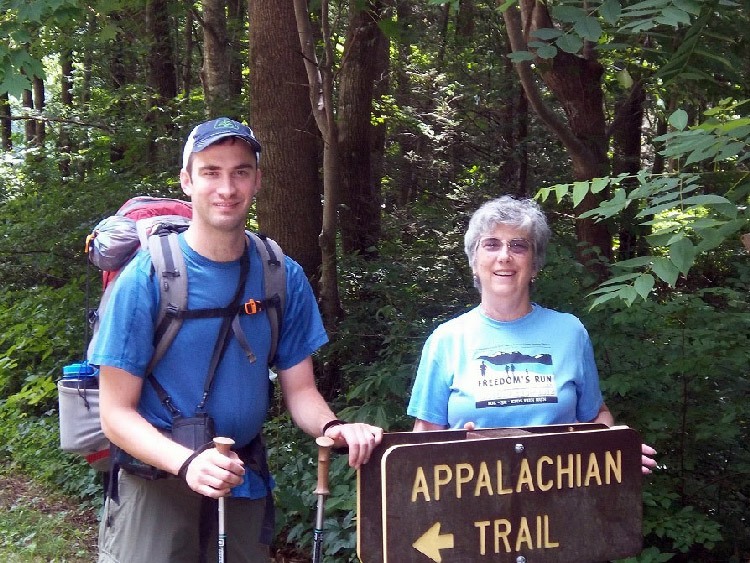by Lyn Widmyer, ATC volunteer
A [brief] escape
September 2, 2015

In 1996, writer Bill Bryson attempted to hike all 2,200 miles of the Appalachian Trail (A.T.) He failed. But he succeeded big time with his humorous account of the trip. His book, “A Walk in the Woods,” quickly became a best seller and inspired a lot more people to hike the Trail. The upsurge in hikers was called the Bryson Bump.
Another Bryson Bump is expected in September when the movie version of the book, starring Robert Redford, premiers. In 1996, when Bryson attempted his thru-hike, 334 people joined the 2,000 mile club, the official roster of those completing the entire A.T. between Springer Mountain, Georgia and Katahdin, Maine in less than a year. In 2014, the list expanded to 714, an all-time record. The Bryson Bump is expected to inspire even more hikers in 2016.
Some thru-hikers (those who complete the entire Trail in less than a year), are disdainful of Bryson because he “only” hiked 200 or so miles before ending his quest.
Benton MacKaye, founder of the A.T., would not share their disdain. He envisioned the Trail as an escape for “toilers in the bee-hive cities along the Atlantic seaboard.” Harried urban dwellers could escape to the Trail for a day or a week, but McKay never thought people would thru-hike the Trail all at once. In 1948, World War II veteran Earl Shaffer became the first to report a thru-hike. He wanted to “walk the army out of [his] system.”
Only one in four hikers who attempt the entire Trail actually succeed. Most hikers complete different portions of the Trail over a longer time period. My first day volunteering at the A.T. Visitors Center in Harpers Ferry, WV, an elderly woman appeared and announced she had just completed the Trail. We all cheered. How long did it take you? I asked. “Nineteen years,” she replied. For two decades, her husband drove her to different locations on the Trail and then retrieved her days or weeks later.
Clearly, Bryson was a bit naïve thinking he could hike the rigorous Trail with very little preparation or hiking experience. In “A Walk in the Woods,” Bryson realizes his quest is over while sitting in a shelter in Tennessee looking at a map of the A.T. He writes,
“All that we had experienced and done—all the effort and toil, the aches, the damp, the mountains, the horrible stodgy noodles, the blizzards, the dreary evenings, the endless, wearying, doggedly accumulated miles—all that came to two inches on the map. My hair had grown more than that. One thing was obvious. We were never going to walk to Maine.”
For someone like me, who considers a stroll along the C&O Canal towpath a major hiking event, Bryson’s decision to abandon his quest is very understandable. When I see thru-hikers at the Visitors Center loaded down with 45 pound packs, exhausted, hungry and reeking of sweat, I know even section hiking the Trail is not in my future. But my fascination with the A.T. only increases with each hiker I meet.
I agree with Bryson’s description of the Trail:
“There is the good old A.T., still quietly ticking along after six decades, unassuming, splendid, faithful to its founding principles, sweetly unaware that the world has quite moved on. It’s a miracle really.”
Experience the miracle. Park near the A.T. Visitors Center and walk into Harpers Ferry National Historical Park on the Appalachian Trail. The hike is less than a mile.
Now that’s my idea of a walk in the woods.





